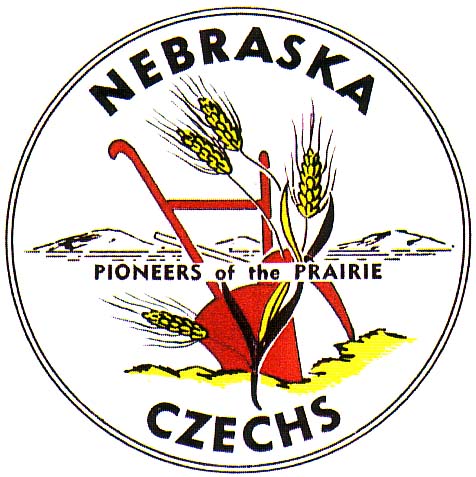
Kroje - Folk Costumes
The wearing of "kroje", or costumes, is one way in which it serves as a promotion in helping to keep alive the traditions of Czech and Slovak culture.
Men, women and children take great pride in wearing their costumes and participating at festivals throughout the year. The interest in the Czech culture is evident by the number of Czech festivals held throughout the United States every year. Folk costumes are an indispensable part of folk songs, music and dances and are the pride of our heritage.
There are many varieties of costumes, reportedly more than 550 of either Czech or Slovak origin. Out of this group, twenty-seven of them are more familiar, because they bear the names of important cultural centers of the Czech and Slovak Republics.
The differences in the costumes reflect the differences in geography and influence of neighboring cultures. To a great extent, the look of the kroje depended not only on the district of origin, but also on the purpose for which they were used. Fine distinguishing features such as intricate embroidery, bright colors, designs, ornaments, flowers and the style of the blouses, kerchiefs, lace, etc. all help to characterize the origin of the kroje.
Each kroje is a work of art. The colors are strikingly beautiful and intense, including a mixture of flowers, ribbons, lace, eyelets and feathers, all encircled with a bountiful supply of the most exquisite embroidery and hand cut lace.
The not To Billowing skirts are worn over starched petticoats. The skirts are made of flax linen, hemp, serge, wool, satin, or brocade fabric. Solid colors, from bright reds, blues to yellow and black are the predominant colors. Some skirts have stripes or hand-embroidered floral designs. The skirts are gathered or pleated at the waist. The blouses are always made of white cotton, linen or organdy, trimmed in white lace or eyelet, and hand-cut embroidery. Some have hand-cut lace. Some of the women's enormous puffed pillow lace sleeves are often filled with tissue paper to fill them out. They are then gathered and tied at the elbow with brightly colored ribbon. The complement the blouse and skirt, an apron is worn. Some are black adorned with elaborate embroidery and lace trimming. There are also white aprons made of cotton or organdy with lace and embroidery.
The vests are made of heavy broadcloth, velvet, wool or satin with buttons or string laced in front. Some are intricately embroidered with colorful gold and silver thread in crewel patterns. Some are sequined and decorated with insets of ribbon and pom-poms on the back of the vest. A colorful sash is worn around the waist or over the shoulders.
Head wear designs also vary, ranging from brightly decorated caps adorned with beads, pearls, flowers, multi-colored stones and mirrored bangles to plain white caps edged in lace with a large bow or scalloped design. Floral wreaths or colorful scarves, or white kerchiefs are also worn on the head.
A feather in a man's hat means that he is single and a wreath of flowers in a girl's hair means that she is likewise unattached.
Footwear varies from black boots to low-heeled slippers. Some of the boots are high and accordion-pleated. On others, the soles and heels are joined with wooden pegs and have metal taps on the heels. Black or white stockings are worn with low-cut shoes or moccasins.
Men, women and children take great pride in wearing their costumes and participating at festivals throughout the year. The interest in the Czech culture is evident by the number of Czech festivals held throughout the United States every year. Folk costumes are an indispensable part of folk songs, music and dances and are the pride of our heritage.
There are many varieties of costumes, reportedly more than 550 of either Czech or Slovak origin. Out of this group, twenty-seven of them are more familiar, because they bear the names of important cultural centers of the Czech and Slovak Republics.
The differences in the costumes reflect the differences in geography and influence of neighboring cultures. To a great extent, the look of the kroje depended not only on the district of origin, but also on the purpose for which they were used. Fine distinguishing features such as intricate embroidery, bright colors, designs, ornaments, flowers and the style of the blouses, kerchiefs, lace, etc. all help to characterize the origin of the kroje.
Each kroje is a work of art. The colors are strikingly beautiful and intense, including a mixture of flowers, ribbons, lace, eyelets and feathers, all encircled with a bountiful supply of the most exquisite embroidery and hand cut lace.
The not To Billowing skirts are worn over starched petticoats. The skirts are made of flax linen, hemp, serge, wool, satin, or brocade fabric. Solid colors, from bright reds, blues to yellow and black are the predominant colors. Some skirts have stripes or hand-embroidered floral designs. The skirts are gathered or pleated at the waist. The blouses are always made of white cotton, linen or organdy, trimmed in white lace or eyelet, and hand-cut embroidery. Some have hand-cut lace. Some of the women's enormous puffed pillow lace sleeves are often filled with tissue paper to fill them out. They are then gathered and tied at the elbow with brightly colored ribbon. The complement the blouse and skirt, an apron is worn. Some are black adorned with elaborate embroidery and lace trimming. There are also white aprons made of cotton or organdy with lace and embroidery.
The vests are made of heavy broadcloth, velvet, wool or satin with buttons or string laced in front. Some are intricately embroidered with colorful gold and silver thread in crewel patterns. Some are sequined and decorated with insets of ribbon and pom-poms on the back of the vest. A colorful sash is worn around the waist or over the shoulders.
Head wear designs also vary, ranging from brightly decorated caps adorned with beads, pearls, flowers, multi-colored stones and mirrored bangles to plain white caps edged in lace with a large bow or scalloped design. Floral wreaths or colorful scarves, or white kerchiefs are also worn on the head.
A feather in a man's hat means that he is single and a wreath of flowers in a girl's hair means that she is likewise unattached.
Footwear varies from black boots to low-heeled slippers. Some of the boots are high and accordion-pleated. On others, the soles and heels are joined with wooden pegs and have metal taps on the heels. Black or white stockings are worn with low-cut shoes or moccasins.
Authentic 'KROJE" From The Czech Republic & The Slovak Republic
By Willa Mae Cervenka, published in Czech Reflections in 1994
By Willa Mae Cervenka, published in Czech Reflections in 1994
Plz note: Not all regions of the Czech Republic have costume pieces that have the same meaning. In the Chodsko region of Bohemia, the only females that wear the flowers in their hair are: little girls (Not teens) brides and bridesmaids. It is not a sign of "being available".
Sue Underwood, Blue River Czechs, Wilber, Nebraska 68465
zuzanna@windstream.net
Sue Underwood, Blue River Czechs, Wilber, Nebraska 68465
zuzanna@windstream.net
